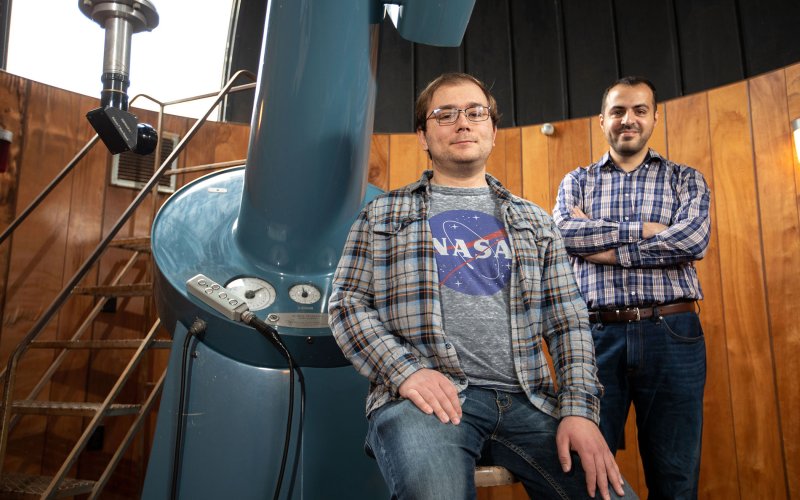A UAlbany Summer: NASA Technologist

ALBANY, N.Y. (Aug. 24, 2021) – From conducting cancer-related research to studying abroad, UAlbany students spend their summers engaged in numerous practical learning opportunities covering a wide range of subjects.
For John Bradburn, a PhD student in electrical and computer engineering at UAlbany’s College of Engineering and Applied Sciences (CEAS), even the sky isn’t limiting. Bradburn will spend up to the next four summers working at NASA as a visiting technologist. NASA is providing Bradburn $80,000 a year for up to four years as part of the 2021 NASA Space Technology Graduate Research Opportunities program.
Bradburn, who received his undergraduate degree in computer science from UAlbany, has been working with Assistant Professor of Electrical and Computer Engineering Mustafa Aksoy on calibration of CubeSat-based remote sensing radiometers. He was one of about 50 students honored by NASA with the fellowship, in his case for his proposal, “Enabling Low-power Smart Sensors with Machine Learning Calibration.”
“John and I have been working for almost two years on remote sensing and CubeSat technologies,” said Aksoy. “In his proposal, John suggested to expand our work to include calibration of such systems during their transient states, which is quite important considering that low-power requirements force us turning these instruments on and off quite frequently in space.”
“John is the first CEAS student to be selected for this highly competitive program. We are extremely proud of his achievement and look forward to seeing what develops from it, how it enriches his graduate school experience, and to having him share his experiences with other CEAS students,” said CEAS Dean Kim L. Boyer. “We know that John’s work at NASA and with Professor Aksoy will advance America’s technical and economic objectives in areas of national and global importance – consistent with the CEAS mission of Science in Service to Society.”
This marks the 10th consecutive year that NASA’s Space Technology Mission Directorate is sponsoring U.S. citizens or permanent resident graduate students who show significant potential to contribute to NASA’s goal of creating innovative new space technologies for the United States’ science, exploration and economic future.
NASA Space Technology graduate researchers perform innovative, space technology research at their respective campuses and at NASA Centers – in Bradburn’s case that’s the Goddard Space Flight Center in Greenbelt, Md.
Awards are made in the form of grants to accredited U.S. universities on behalf of individuals pursuing master’s or doctoral degrees, with the faculty advisor serving as the principal investigator. In addition to Aksoy, Bradburn is also being matched with a technically relevant and community-engaged NASA subject matter expert, who will serve as his research collaborator. The research collaborator will serve as the conduit into the larger technical community corresponding to the student’s space technology research area.
According to NASA, the visiting technologist experience is an integral part of the Graduate Research Opportunities award, with awardees performing their research at NASA Centers. Through this experience, graduate researchers have the opportunity to work collaboratively with leading engineers and scientists in their chosen area of research; take advantage of broader and/or deeper space technology research opportunities directly related to their academic and career objectives, acquire a more detailed understanding of the potential end applications of their space technology efforts, and directly disseminate their research results within the NASA technical community.
In announcing the program, the Space Technology Mission Directorate sees the development of advanced and innovative space technologies as “critical for our nation to meet its goals to explore and understand the Earth, our solar system, and the universe. Space technology efforts will improve the nation's leadership in key research areas, enable far-term capabilities, and motivate disruptive innovations that make science, space travel, space exploration and commercial space more effective, affordable and sustainable.”
NASA Space Technology graduate researchers are not only tasked with expanding our understanding of the universe beyond the Earth. It is also expected that they will improve America’s technological competitiveness by providing the U.S. with a suite of revolutionary discoveries will also lead to major breakthroughs that are needed to address energy, health, transportation, and environmental challenges.




